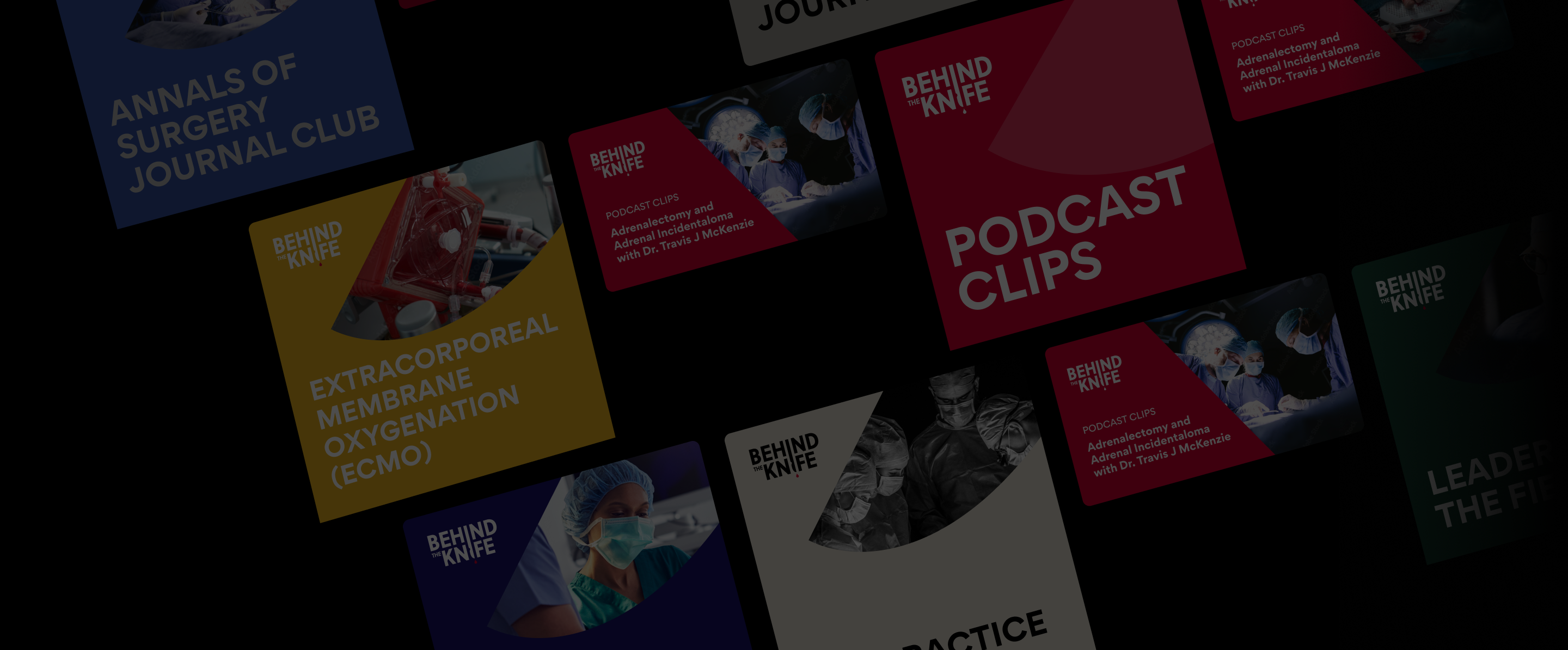Slide 1 of 8 


Episode 895Jun. 16, 202531 MIN
From Cringe to Competent: Surviving Intern Year

Slide 2 of 8 


Episode 892Jun. 05, 202540 MIN
Clinical Challenges in Hernia Surgery: Mesh Selection for Hernia Repair

Slide 3 of 8 


Episode 890May. 29, 202514 MIN
10 Consult Commandments to Dominate the Day

Slide 4 of 8 


Episode 872Apr. 03, 202530 MIN
BIG T Trauma Ep. 22: Trauma Pitfalls #3

Slide 5 of 8 


Episode 852Jan. 27, 202501 H 02 MIN
Artificial Intelligence for the Clinician Ep. 1: AI Primer

Slide 6 of 8 


Episode 781Sep. 05, 202426 MIN
Dominate Surgery: A High-Yield Guide to Your Surgery Clerkship - Sample Episodes: Thyroid and Melanoma

Slide 7 of 8 


Episode 690Dec. 11, 202340 MIN
Behind the Knife ABSITE 2024 - Colorectal - Part 1

Slide 8 of 8 


Episode 466Feb. 17, 202221 MIN
BTK General Surgery Oral Board Review - Sample Episode 1 - Cardiac Trauma

Behind the Knife has you covered. Stay current, learn something new, and enjoy.
Podcast Overview
Behind the Knife is the world’s #1 surgery podcast. From high-yield educational topics to interviews with leaders in the field, Behind the Knife delivers the information you need to know. Tune in for timely, relevant, and engaging content designed to help you DOMINATE THE DAY.
All Podcast Episodes
Newest to Oldest
- Prev
- Next
Explore Other Topics
AnesthesiaBariatricBreastBurnCareer DevelopmentCOVIDColorectalEmergency General SurgeryEndocrineGeneral SurgeryGlobal SurgeryHepatobiliaryHerniaMinimally InvasiveOrthopedic SurgeryPalliative CarePediatricPlastic SurgeryProceduresSurgical Critical CareSurgical EducationSurgical OncologyTraumaUpper GIVascularConference HighlightsCardiothoracicMiscellaneousMedical StudentHealthcare equitySurgical SkillsTransplantLeadershipRenalSpanishArtificial Intelligence






